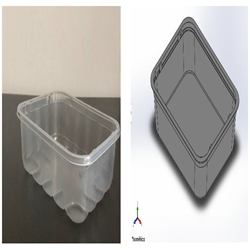Mushroom-based packaging, known as myco-materials or mycelium packaging, is a pioneering and sustainable departure from traditional packaging methods. Harnessing the innate properties of mushrooms, this eco-friendly solution transforms mycelium, the root-like structure of fungi, into a binding agent for agricultural waste like corn husks or stalks. This process yields a composite material that requires minimal energy and resources, presenting a more sustainable alternative to conventional packaging materials.
The key component, mycelium, not only forms a resilient packaging material but also brings remarkable environmental benefits. Mushroom packaging is biodegradable and compostable, breaking down naturally when disposed of, returning nutrients to the soil without leaving harmful residues. This starkly contrasts with the persistent nature of traditional plastics, contributing to pollution and ecological harm over extended periods.
The versatility of mushroom-based packaging extends beyond environmental friendliness. With excellent insulation properties, it becomes an ideal choice for safeguarding fragile items during transportation. Additionally, its lightweight nature reduces the overall weight of packages, potentially lowering transportation-related carbon emissions.
The innovation doesn't stop at general packaging. In the realm of food packaging, mycelium takes center stage. The cultivation process begins in a controlled environment, often using robust strains like those found in oyster mushrooms. Agricultural waste serves as the substrate, with mycelium binding it together to create a strong and resilient packaging material.
Molding the mycelium-infused substrate into the desired shape allows for customization, and the subsequent drying process halts further growth while achieving the desired consistency. Optional post-processing steps, such as heat treatment or coatings, enhance the material's durability and water resistance.
This mushroom-based food packaging is not just environmentally friendly; it also possesses natural antimicrobial properties, providing an added layer of protection for perishable goods. Aligning with the global movement to reduce single-use plastics and embrace circular economy practices, mushroom-based food packaging exemplifies the potential of nature-inspired solutions.
As industries and consumers increasingly prioritize sustainability, mushroom-based packaging, both in general use and specifically in food packaging, stands as a testament to innovation. This mycelium marvel offers a glimpse into a future where packaging not only serves its functional purpose but also actively contributes to nurturing the environment from which it originates.
Dr. Rosnah Nawang and Dr. Mohd Hafizuddin Ab Ghani
Research Officers
Nanomaterials Synthesis and Characterisation Laboratory (NSCL)
Institute of Nanoscience and Nanotechnology, UPM
Date of Input: 31/01/2024 | Updated: 31/01/2024 | nurnazeera
MEDIA SHARING























